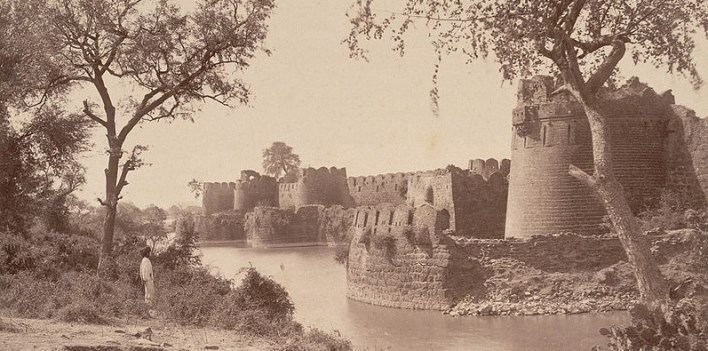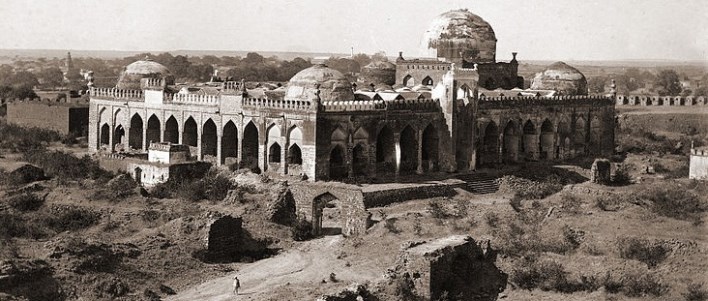The Gulbarga Fort is found in the Gulbarga district in North Karntaka, built in 1347. The Gulbarga fort is one of the finest examples of the ancient Islamic architecture in Karnataka. The fort was originally built by Raja Gulchand. As Gulbarga gained prominence as the Bahmani capital, the fort was fortified by Alauddin Bahmani with a deep moat and massive walls. But according to Wikipedia the fort was built by Al-ud-din Bahmani of the Bahmani Dynasty after he cut off his ties with the Delhi Sultanate.
The fort is built with well planning the canal is made around the fort so that it becomes difficult to the enemy. Krishna River and Bhima River flow very close to the fort. Predominantly black soil is found in this area,and is situated in the drought prone region. The fort contained 15 towers and 26 guns of which one was 8 metres long.

Gulbarga Fort. Photographer Deen Dayal
Tomb of Kwaja Bande Nawaz
The place has a huge sprawling complex housing the tomb of’ Bande Nawaz’, the great Sufi Saint, who came to Gulbarga in 1413. His tomb’s walls have paintings and a mosque built by the Mughuls is near the tomb. It was built in the Indo-Saracenic style. The paintings on the walls and ceiling have a fusion of Turkish and Irani influence.
The Khandar Khan’s mosque and Hirapur mosque (1585) built by Chandbibi are some other monuments here, and the tomb of Sultan Hassan and Firoze Shah are imposing structures. The state Archeology Museum here has Buddhist plaquest brought from Sannati.
Jami Masjid In Gulbarga Fort

Jami Masjid in Gulbarga Fort. Photographer Deen Dayal
The Jami Masjid was later built inside the fort in 1367, in Persian architectural style. The fort is situated in an area of 38,000 square feet. This mosque was one of the first in South India. It has the dimensions of 216 x 176 feet (66x54meters). The fort does not have an open courtyard. This mosque has five large domes, 75 small domes and 250 arches present in it.
Gulbarga Fort is recognized as a national monument by the Archaeological Society of India [ASI] and are looked after by The Ancient Monuments and Archaeological Remains Act of 1958.
History of Gulbarga Fort
In the 6th Century the Rashtrakutas ruled over the area. But later the Chalukyas ruled over the place for almost two hundred years. But at the end the Hoysalas took over. Muhammad bin Tughlug occupied the Deccan in the early 14th Century.
The revolt of the Muslim officers appointed from Delhi resulted in founding of the Bahmani Sultanate in 1347 by Hassan Gangu, who chose Gulbarga (named as ‘Ahsenabad’ during this period) to be his capital. The capital of the Bahmani Kingdom was Gulbarga, with its headquarters at the Gulbarga Fort.
The Bahmanis ruled over most of Deccan until the late 15th Century and early 16th Century, then the kingdom was divided into five independent states. After India became independent in August 1947 ,the fort and Gulbarga district became a part of Bangalore rule.
Also See: